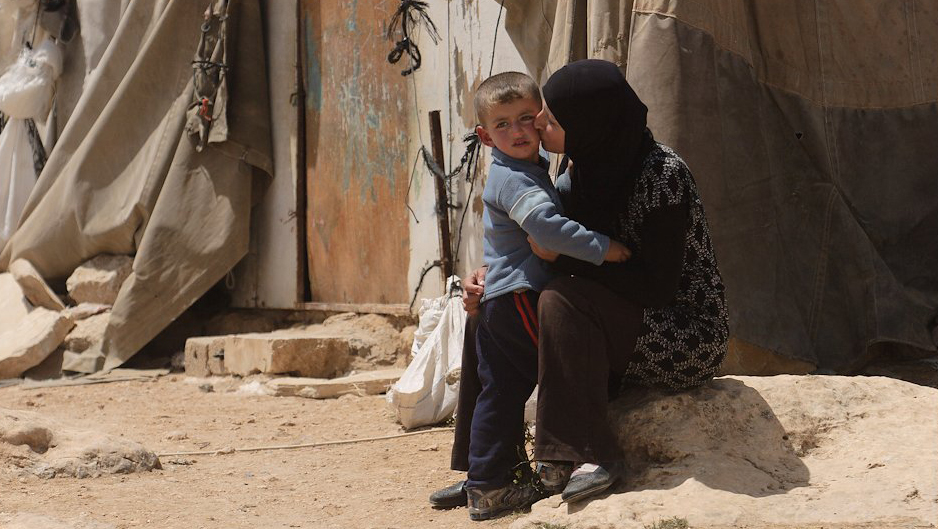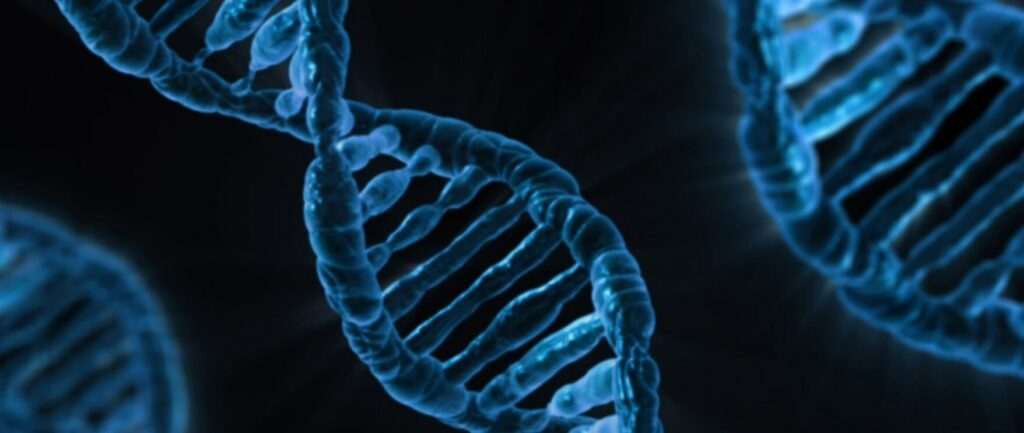Your cart is currently empty!
You Might Have Inherited Trauma From Your Parents or Grandparents

Many of us carry pain from our past experiences. You jump at loud noises, feel anxious in crowds, or struggle with trust issues. We often link these responses to our own lived experiences. But what if some of your emotional responses come from traumas you never personally faced?
Recent scientific research shows something remarkable—trauma can be passed down through generations. Your DNA might carry marks from difficult experiences your parents or grandparents endured, affecting your mental and physical health today.
Family stories about hardship passed down through generations may have a biological basis. When grandma survived war or dad grew up during times of violence, their bodies registered these experiences at a molecular level. Remarkably, those molecular changes might now live inside you.
A groundbreaking study of Syrian refugee families reveals how war trauma leaves lasting marks on DNA that pass from one generation to another. For anyone wondering why they feel anxious without knowing why or anyone seeking to break cycles of family pain, this news matters deeply.
What Science Reveals About Inherited Trauma

For years, scientists wondered how life experiences might affect future generations. Darwin’s theory of evolution suggested changes happen slowly over many generations through random mutations and natural selection. However, newer research shows that some experiences can change how genes work without altering the genetic code.
Scientists call these changes “epigenetic modifications.” While your DNA sequence stays the same, marks added to your genes can turn them on or off like switches. Life experiences, particularly traumatic ones, can flip these switches.
Early evidence for epigenetic inheritance came from animal studies. Mice exposed to stress passed anxiety-like behaviors to offspring who never experienced the original stressor. Similar patterns appeared in studies of children and grandchildren of Holocaust survivors, who showed altered stress hormones despite never experiencing concentration camps themselves.
Now, researchers have documented specific changes in human DNA across three generations following exposure to violence. A study published in Scientific Reports in 2025 by Mulligan and colleagues examined Syrian refugees who experienced trauma during conflicts.
Most surprising? Grandchildren who never directly experienced war showed measurable DNA changes similar to their grandparents who lived through violence. Researchers found 14 distinct locations on DNA where these epigenetic marks appeared—concrete evidence that trauma doesn’t end with the person who experiences it.
How Trauma Gets Passed Down Through Generations

To understand how trauma transfers across generations, we need to look at three pathways: biological, psychological, and social transmission. Biological transmission happens through epigenetic changes. When someone experiences severe stress or trauma, stress hormones flood their body, changing how specific genes function. Amazingly, some of these changes can affect egg or sperm cells, passing altered gene activity to children.
For example, a pregnant woman experiencing violence produces stress hormones that cross the placenta, affecting her developing baby’s stress response system. Her child may develop a more sensitive alarm system in their brain, making them more reactive to potential threats.
Beyond biology, trauma passes through psychological mechanisms. Parents who experienced violence may parent differently—perhaps becoming overprotective or emotionally distant. Children learn these patterns and may repeat them with their children. Social transmission occurs when trauma stories become woven into family narratives. “The idea that trauma and violence can have repercussions into future generations should help people be more empathetic, help policymakers pay more attention to the problem of violence,” said Connie Mulligan, Ph.D., a professor of Anthropology and the Genetics Institute at the University of Florida and co-senior author of the new study. “It could even help explain some of the seemingly unbreakable intergenerational cycles of abuse and poverty and trauma that we see around the world, including in the U.S.”
Breaking Down the Syrian Refugee Study: War Trauma Lives On in DNA

When researchers from several universities collaborated to study Syrian refugee families, they created a uniquely powerful research design. They compared three groups:
- Families where grandmothers were pregnant during the 1980 Hama massacre
- Families where mothers were pregnant during the 2011 Syrian uprising
- Syrian families who moved to Jordan before 1980 (control group)
From 48 families, researchers collected cheek swab samples from 131 individuals. DNA analysis revealed striking patterns of epigenetic changes associated with violence exposure.
For grandchildren whose grandmothers experienced war while pregnant, researchers found 14 locations on DNA with significant methylation changes—a chemical modification that affects how genes work. Eight of these changes remained substantial even when strictly comparing only children’s samples.
These epigenetic marks showed a dose-response relationship: more traumatic events correlated with greater DNA modifications. Even more striking, 32 of 35 identified markers showed similar patterns across direct, prenatal, and germline exposures, suggesting a common epigenetic signature of violence.
Children whose mothers experienced violence while pregnant showed accelerated epigenetic aging. Our bodies typically add predictable epigenetic marks as we age. When these appear earlier than expected, it signals faster biological aging—potentially leading to earlier onset of age-related diseases.
Without using complex scientific language, these findings simply mean war trauma changed how genes function, and these changes passed from grandparents to parents to children who never experienced war themselves.
Mental Health Connections to Inherited Trauma

How might inherited trauma affect your daily life? Research links epigenetic changes from trauma to several mental health conditions.
People carrying inherited trauma markers often show heightened anxiety. Your body might remain alert, scanning for danger even in safe situations. This hypervigilance made sense for ancestors facing real threats but can manifest today as generalized anxiety, panic attacks, or constant worry.
Depression also links strongly to inherited trauma. Genes affecting mood regulation may function differently in those carrying trauma markers. You might experience persistent sadness, lack of motivation, or feelings of hopelessness without understanding their source.
Post-traumatic stress responses can appear in people who never experienced the original trauma. Specific triggers—sounds, smells, or situations resembling ancestral trauma—may provoke strong emotional reactions seemingly out of proportion to present circumstances.
Sleep disturbances commonly accompany inherited trauma. Your brain’s ability to regulate sleep cycles may be altered by epigenetic changes, leading to insomnia, nightmares, or restless sleep patterns that mirror those of traumatized ancestors.
Physical health often suffers, too. Research links inherited trauma to inflammation, cardiovascular problems, and autoimmune disorders. Your body pays a physical price when your stress response system remains chronically activated.
Many people live with these symptoms without connecting them to family history. Understanding the science of epigenetic inheritance helps explain why some mental health challenges persist despite therapy or medication—they may have roots in experiences predating your birth.
Finding Hope Amidst the Science of Inherited Trauma
Despite evidence that trauma echoes through generations, researchers emphasize an equally powerful message: resilience travels across generations.
One of the study authors, Connie Mulligan, noted: “In the midst of all this violence we can still celebrate their extraordinary resilience. They are living fulfilling, productive lives, having kids, carrying on traditions.”
Our bodies evolved mechanisms to adapt to challenging environments, passing those adaptations to future generations. While this can transmit vulnerability, it also transfers strengths—determination, resourcefulness, and capacity for survival against odds.
Epigenetic marks differ from genetic mutations in one crucial way: many can be modified. Research shows positive experiences, supportive relationships, and specific therapeutic approaches can reshape epigenetic patterns, potentially reversing some effects of inherited trauma.
Community connection plays a vital role in healing. Humans evolved as social beings, with trauma recovery mechanisms that activate through safe relationships. Finding communities where your experiences make sense helps rewrite internal narratives about safety and belonging.
Some researchers suggest our capacity to inherit trauma evolved as an adaptive mechanism—preparing future generations for challenging environments. Understanding this perspective helps shift from viewing inherited trauma as damage to seeing it as information your ancestors wanted you to have for survival.
What This Means for How We Understand Violence

Recognizing trauma travels across generations transforms how we view violence. Individual acts of harm ripple outward, affecting families, communities, and future generations not yet born.
When violence occurs during war, domestic abuse, or community conflict, the impact extends far beyond immediate victims. Children born years later may carry biological markers of events they never witnessed. This expanded understanding of harm demands more comprehensive approaches to addressing violence.
Public health policies need updating to reflect this science. Violence prevention is reducing immediate suffering and preventing epigenetic harm to future generations. Mental health services must consider family trauma history, not just individual experiences.
For communities recovering from conflict or historical trauma, healing requires addressing visible and invisible wounds. Programs supporting current trauma survivors must consider generational effects, providing resources that help break cycles rather than perpetuate them.
Education about epigenetic inheritance can foster empathy. Understanding how past violence shapes present behavior helps reduce blame and increase compassion. As study author Mulligan noted, “The idea that trauma and violence can have repercussions on future generations should help people be more empathetic, help policymakers pay more attention to the problem of violence.”
Steps to Heal Generational Wounds
Healing inherited trauma begins with awareness. Simply recognizing that some of your struggles may connect to family history can shift your relationship with them.
Learn your family history beyond names and dates. Ask about the challenges your parents, grandparents, and ancestors faced. What wars, migrations, losses, or hardships shaped them? Notice patterns of behavior, beliefs, or health issues repeating across generations.
Professional support helps navigate this terrain. Therapists trained in approaches like Internal Family Systems, EMDR, Somatic Experiencing, or other trauma-specific modalities can address inherited trauma at both psychological and physiological levels.
Work with your body, not just your mind. Since trauma leaves physical imprints, somatic approaches prove particularly effective. Regular movement practices, especially those involving rhythm and connection with others, help reorganize nervous system patterns.
Build connection and community. Safe relationships provide the context where healing happens most effectively. Finding others working through similar patterns creates spaces for mutual support and witnessing.
Practice self-compassion while exploring this territory. Understanding inherited trauma doesn’t mean blaming ancestors or yourself. Each generation does its best with available resources, awareness, and circumstances.
Make conscious choices about what patterns you pass forward. While you didn’t choose inherited trauma, you can decide what future generations receive from you. Each healing step you take reshapes what you transmit to children and grandchildren.
Looking Forward With New Knowledge About Our Past
Science confirms what many cultural traditions have long suggested—we remain connected to our ancestors through invisible threads. Those threads include epigenetic marks carrying information about their lives, challenges, and survival strategies.
Rather than viewing inherited trauma as a burden, we might see it as an opportunity. Each generation has a chance to heal themselves and lineages of pain. When you work through inherited patterns, you create ripples forward and backward through time.
Meanwhile, personal healing does not need to wait for perfect scientific understanding. Each step toward wholeness—each moment of self-compassion, authentic connection, and trauma pattern recognized and transformed—contributes to collective healing.
Our bodies carry ancestral wisdom alongside ancestral wounds. Listening to both helps us integrate past experiences into a more conscious present. From that integration emerges a future where trauma no longer silently shapes generations to come.
As we apply this emerging science to our lives, families, and communities, we participate in a profound human journey—transforming suffering into wisdom that serves us and all who come after us.
For anyone struggling with mental health challenges that seem to echo family patterns, know that science increasingly validates your experience. What feels like inherited pain likely has biological roots—and biology that can change offers hope for healing that extends across generations.
